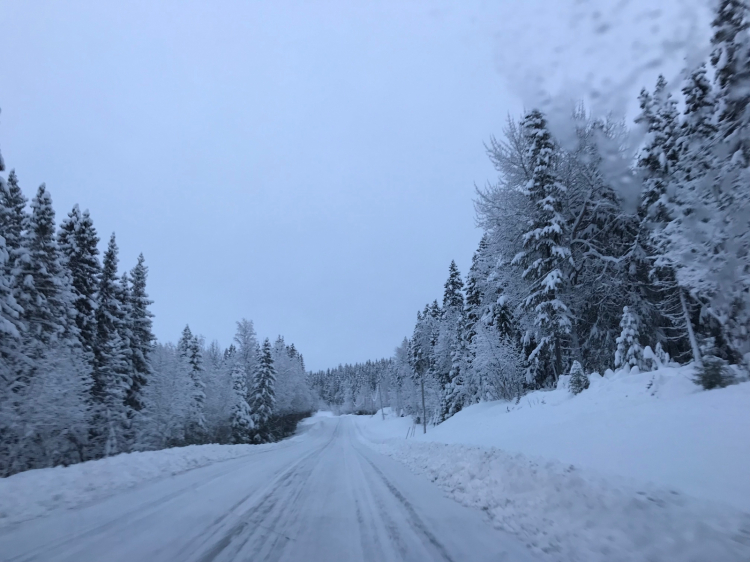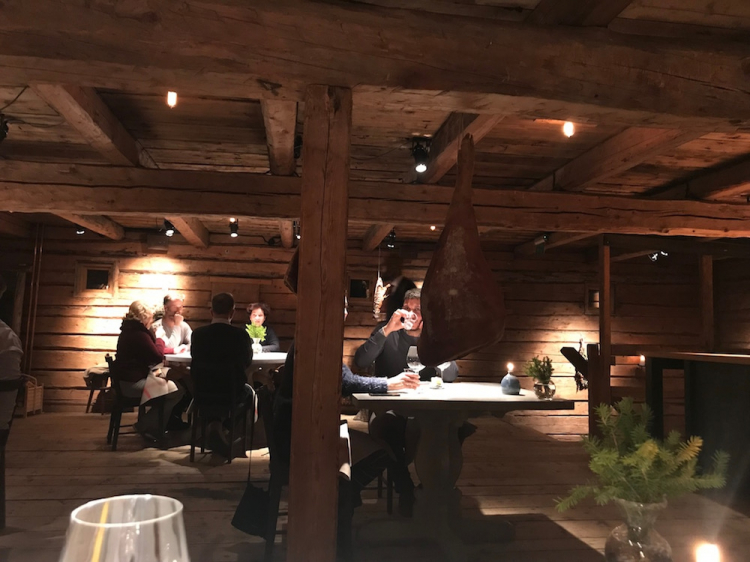see part one
Arriving late in the afternoon, in one of the most secluded places on the planet is surely one of the most fascinating experience you could ever have. This is not the South Pole, of course, we’re used to our Alps (of which Swedes are envious) and we certainly know how to drive with any means on any trail. All this to get to a small red building that stands out in the snow, with a 2 Michelin star restaurant that «is worth the detour», as suggested by the Red Guide.
There’s nothing on the plateau except for some small buildings in which you can find 5 rooms that belong to the restaurant, a nice billiard room, a sauna, and little more. The staff sleeps in a separate building right at the end of the road, on the other side of the hill, on the way to Åre: having a driving licence is a necessary requirement in order to be part of the brigade at Fäviken.
So the reason why I took this trip, some 2.500 km away from home, finally begins: after leaving the car in the middle of the road, in front of the red building, they welcome us on the first floor. Here there’s a corridor with the only rooms available at the restaurant. Nordic style dominates everywhere: you feel as if you were in a mountain house, even though it’s little over 600 metres above the sea level, so it’s closer to the average Italian countryside.

The surrounding landscape
The experience starts with the sauna, where with the other few guests you can have a small aperitif while dressed in bathrobes. Beer and wine are available to clients, together with a venison salami and the omnipresent cucumber, which in this case is pickled.
At 7 pm the dinner begins. We arrived a little earlier, for a small aperitif with champagne, salami and baby carrots. The meal lasts around 2 hours and a half. Half of the meal takes place on the ground floor, in the room where we had the aperitif, at the only shared table for six inside the restaurant. The other half is served on the first floor. Everything takes place quickly, with short breaks in between some of the courses, then again quickly moving across the courses, and then back to the ground floor after some 28 courses, from the amuse bouche to the petits fours.
It would take a few more episodes just to describe each dish, but let’s try to sum up. The very first course is
Flax seed pastry and vinegar with sauce of blue mussels from Norway: an excellent start with a strong seafood flavour. As for meat, there’s the fourth and fifth dishes:
Wild trout roe in a dough of dry pig’s blood and
Pork’s head bon-bon, dipped in mother yeast and then fried, with gooseberries and salt aromatised with tarragon. Good and very special, especially the former.

The dining room on the first floor
The rhythm slows down, we move to the first floor where they serve
Scallops cooked on juniper branches served in their shell with some broth – excellent. Or
Steamed perch with mushroom aromatised with pine tree: the mushroom is delicious and the fish is perfectly cooked, but without a pinch of salt. Even paired with the mushrooms, it’s not convincing. It’s a pity because the cooking was impeccable and the meat was excellent and abundant.
We speed up again and they serve the very famous
Quail eggs covered in black ash (which is in fact sheep’s droppings, a very ancient way of preserving food) served with a sauce of dried trout and pickled calendula. The main courses end with the only “second course”, that is to say
Pork with pickled blueberries. All in all, it’s a disappointment.
Then there’s the
Colostrum served in two half eggshells with berries and after a few small tastings we go back downstairs, where they serve cakes and petits fours, paired with coffee or herb tea, and tonic liquors. Finally, a nice cigar to end the night under an Indian tent, in the middle of the snow, in the field in front of the restaurant. A log fire and a blanket help survive the -10°C.

Mahogany clam: a fifty-year-old clam with frozen blueberries
The following day the experience draws to its end with a very abundant and delicious savoury breakfast, which helps facing the 8-hour drive back to Stockholm.
Translated into English by Slawka G. Scarso
2. The en